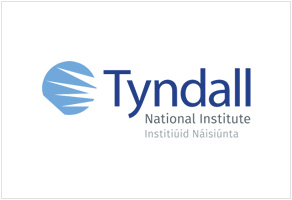|
|
Main Expertises |
| Beyond CMOS |
Neuromorphic Computing |
- Multi-level Non-volatile memory; Device design and fabrication (micrometre and nanometre scales), structural and electrical characterisation of materials and devices, performance analysis and modelling
- Synaptic Transistors
- Ferroelectric and Multiferroic materials
- Atomic-scale simulations of materials (semimetals, semiconductors, oxides, organic materials, etc) including the effects of doping, vacancies and other defect types. Also, atomic-scale quantum transport simulations of nanoelectronic devices, including field-effect transistors, heterostructures, memories, metal-material interface, spin-based devices.
|
| Phonon engineering |
x |
| Small slope switches-NW/TFET/NEMS |
- Device design and fabrication (micrometre and nanometre scales), structural and electrical characterisation of materials and devices, performance analysis and modelling
- Characterisation and modelling of devices (e-beam lithography, sub 10nm wafer scale processing); Strong track record in Si processing, device fabrication and electrical test; Optimise process parameters
- Material/process specific metrology: design and experimentation. Electron beam lithography (EBL). Nanoscale processing: etching, lift off. Crossover of top-down and bottom-up approaches
|
| Alternative materials-2D layers |
- Developing in the next generation of logic switches which will be used in applications, covering: nanoelectronics, flexible electronics, mobile communications and low power sensor technologies.
- Characterisation and modelling of devices fabricated from 2D Materials (e-beam lithography, sub 10nm wafer scale processing); Strong track record in Si processing, device fabrication and electrical test;
Optimise process parameters; Electrical test at cryogenic temperatures and understand the physics of device behaviour
- Atomic-scale simulations of materials (semimetals, semiconductors, oxides, organic materials, etc) including the effects of doping, vacancies and other defect types. Also, atomic-scale quantum transport simulations of nanoelectronic devices, including field-effect transistors, heterostructures, memories, metal-material interface, spin-based devices.
- Device design and fabrication (micrometre and nanometre scales), structural and electrical characterisation of materials and devices, performance analysis and modelling
- ALD Wafer Scale Growth of 2D Materials
- 2D Materials for RF applications; scalability for low cost manufacture (Spectroscopic Ellipsometry, MicroRaman Spectroscopy, Infrared Spectroscopy Optical Spectrophotometry)
|
| Novel devices for ultra-low power |
x |
| 1D |
x |
| Quantum Technologies & Very low temperature electronics |
- Site-controlled quantum dots, which were proven as efficient single and entangled photon emitters, both by optical excitation and electrically driven.
- Modelling of site-controlled QD system demonstrating single and entangled photon emission
- Expertise in atomistic modelling, in particular using methods from first-principles. Study the materials without any input parameters to predict and tune the required properties. Apply to enhance the oscillator strength and engineer external coupling
- Cryoelectronics for quantum technology.
- Electrical test at cryogenic temperatures and understand the physics of device behavior.
- Quantum electronic devices and sensors. Material characterisation – electrical and TEM. Modelling of functional devices (continuum based modelling) In-situ and 3D imaging using electron and ion beam microscopy. Correlative characterisations: different modes of analysis at different length scales to obtain additional information. Material/process specific metrology: design and experimentation. Electron beam lithography (EBL). Nanoscale processing: etching, lift off, chemical surface modifications. Crossover of top-down and bottom-up approaches
|
| More Moore |
Logic Nanodevices& circuits |
- Gate stack development for III-V nanowire CMOS technology, combining RF and logic on the one Si chip. Modelling and engineering of interfaces and interface states.
- Characterisation and modelling of devices (e-beam lithography, sub 10nm wafer scale processing); Strong track record in Si processing, device fabrication and electrical test; Optimise process parameters; Electrical test at cryogenic temperatures and understand the physics of device behaviour.
|
| Memories |
- Ferroelectric and Multiferroic materials
- Device design and fabrication (micrometre and nanometre scales), structural and electrical characterisation of materials and devices, performance analysis and modelling; Spintronics
|
| Very low power devices |
- Spintronics; Device design and fabrication (micrometre and nanometre scales), structural and electrical characterisation of materials and devices, performance analysis and modelling.
- Exploit fundamental understanding through atomic scale modeling for electronic devices and nanoscale systems to propose new materials and novel configurations for nanoelectronic devices, where their entire functionality could be driven from physical effects corresponding to a few atoms. Develop an atomic scale model to evaluate electrical and mechanical properties of proposed material system
|
| High temperature electronics |
x |
| More than Moore |
micro-nano-bio Sensors & Systems |
- Electrochemical sensors
- Silicon and polymer microneedles for smart patches,
|
| Energy Harvesting |
- Thermoelectric energy harvesting
- Supercapacitors
- Piezoelectric harvesting particularly in the area of AlN
- Microelectromagnetic Energy Harvesters
|
| RF devices & circuits |
- ALD Wafer Scale Growth of 2D Materials
- 2D Materials for RF applications; scalability for low cost manufacture (Spectroscopic Ellipsometry, MicroRaman Spectroscopy, Infrared Spectroscopy Optical Spectrophotometry)
- RF MEMS Switches
- Hybrid SAW and EM resonators
- RF tuning methods
|
| Photonics devices |
- Nanostructuring of CMOS compatible materials for applications in photonics. Design, fabrication and characterization of Photonic Integrated Circuits (PICs) and nanophotonic devices. The fabrication processes are typically based on electron beam lithography suite.
|
| Power devices |
- SiC technology
- Power supply-on-chip
|
| Flexible electronics |
|
| Smart systems& Systems design |
Smart systems |
- Edge Processing Interoperability Platform
- Smart self powered mobile embedded systems for Condition Based Monitoring
- Human Machine Interface Wearable AR/VR
|
| Systems design |
x |




 Minatec – CROMA
Minatec – CROMA